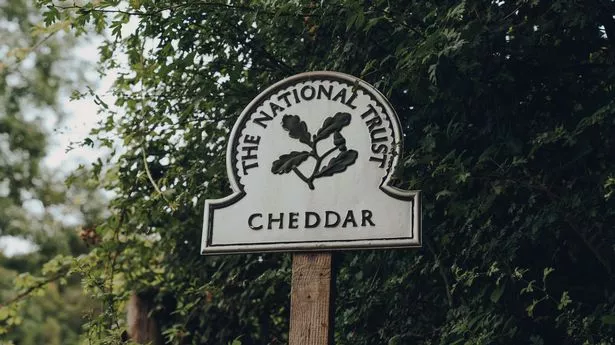Nestled in the heart of England, charming villages often inspire local traditions and culinary delights. One such gem is a cheese that carries both history and flavor in its name—a delightful representation of English heritage. This isn’t just any cheese; it’s a savory treasure, steeped in stories passed down through generations. Whether you’re a cheese connoisseur or simply curious about this creamy creation, join us on an appetizing journey as we uncover the rich tapestry woven around the cheese named for an English village. From its origins to modern-day appreciation, there’s much to savor!
Cheese named for an english village: A Comprehensive Guide
Cheese named for an English village is not just a product; it’s a piece of history. Originating from a quaint locale, this cheese embodies the essence of its surroundings. Each bite reflects the lush pastures and traditional methods used in its creation.
Typically made from cow’s milk, this cheese boasts a creamy texture with varying flavors depending on aging processes. Some versions are sharp and tangy, while others lean towards mild and buttery notes.
The beauty of this cheese lies in its versatility. Enjoy it on a cheeseboard alongside fruits and nuts or melt it into comforting dishes like macaroni and cheese.
Pairing it with regional wines enhances the experience, allowing you to savor both local agriculture and craftsmanship in one delightful morsel.
Exploring recipes that highlight this unique cheese can elevate any dining occasion, making each meal memorable!
Exploring the History of cheese named for an english village
Cheese named for an English village has roots that intertwine with the rich tapestry of British history. This cheese, often linked to a specific location, reflects the agricultural practices and traditions of its region.
The earliest records date back centuries, showcasing how local farmers crafted their unique cheeses using traditional methods. Each village contributed its own flavors and techniques, creating distinct varieties that told the story of the land.
As time passed, these cheeses gained recognition beyond their villages. They became symbols of regional pride and culinary heritage. The connection between community and craft remains strong in every bite.
With each piece of this cheese, you taste not just milk but also history. It captures moments from pastoral life in England while celebrating local identities through flavor profiles unique to each area’s environment.
10 Ways to Honor cheese named for an english village
Indulging in a cheese named for an English village can be a delightful experience. Start by hosting a tasting party featuring this exquisite cheese alongside complementary wines and fruits.
Consider pairing it with artisanal bread or homemade crackers to enhance its flavor profile. Share the joy by gifting small wheels to friends, introducing them to its unique taste.
Cook with it! Incorporate it into classic recipes such as mac and cheese or savory tarts for a twist on traditional dishes.
Visit local shops that specialize in artisan cheeses; support those who carry this particular variety. Attend workshops where you can learn about its production process directly from experts.
Document your culinary adventures through social media, showcasing beautiful presentations of the cheese in various dishes.
Read up on the history behind this beloved dairy product—knowing its origins adds depth to your appreciation.
How Did cheese named for an english village Become Famous?
The journey of cheese named for an English village began centuries ago. It was born from the lush pastures and rich traditions of rural England. Local farmers crafted this cheese using time-honored techniques, passing recipes down through generations.
As word spread about its unique flavor and texture, it caught the attention of cheese enthusiasts beyond the village’s borders. Its distinctive character set it apart from other cheeses available at that time.
Culinary explorers in both restaurants and homes started showcasing this delicacy, elevating its status on menus across the country. Food festivals celebrated local products, allowing visitors to taste and learn about this exquisite creation firsthand.
Media coverage further propelled its fame. Articles highlighted artisan cheesemakers who proudly produced it with passion and skill. This collaboration between tradition and innovation played a crucial role in securing its place in gourmet food culture today.
10 Interesting Facts About cheese named for an english village
Cheese named for an English village boasts a rich heritage that intrigues food lovers. Originating in the quaint village of Cheddar, this cheese has become synonymous with quality.
Its unique taste derives from the local milk, influenced by regional flora. The grassy pastures contribute to its distinct flavor profile, which varies with seasons.
Did you know it’s been produced since at least the 12th century? Its historical roots run deep, connecting generations of cheesemakers.
Another fascinating aspect is its aging process. Some varieties mature for over a year, developing complex flavors and textures.
Cheddar’s popularity skyrocketed in the Victorian era when transportation improvements made it widely accessible across Britain.
You might be surprised to learn that there are several types of cheddar! From mild to extra sharp, each offers something different for your palate.
It even inspired countless recipes worldwide—from mac and cheese to gourmet burgers—showing its versatility in cuisine.
Conclusion
Cheese named for an English village carries a rich tapestry of history, culture, and flavor. This unique cheese not only tantalizes the taste buds but also tells a story that spans centuries. From its humble beginnings in quaint villages to its rise as a beloved delicacy worldwide, this cheese reflects both tradition and innovation.
As you embark on your own journey with this delightful cheese, consider exploring local cheesemakers or even trying your hand at recipes that highlight its unique characteristics. The world of cheeses is vast and varied; each type offers something different to discover.
Whether you’re enjoying it on a charcuterie board or incorporating it into gourmet dishes, embracing cheese named for an English village will enhance any culinary experience. Its legacy continues to thrive through appreciation from food enthusiasts across the globe.
So next time you encounter this special cheese, remember the stories behind it—the people who made it possible—and all the joy it brings to tables everywhere.




